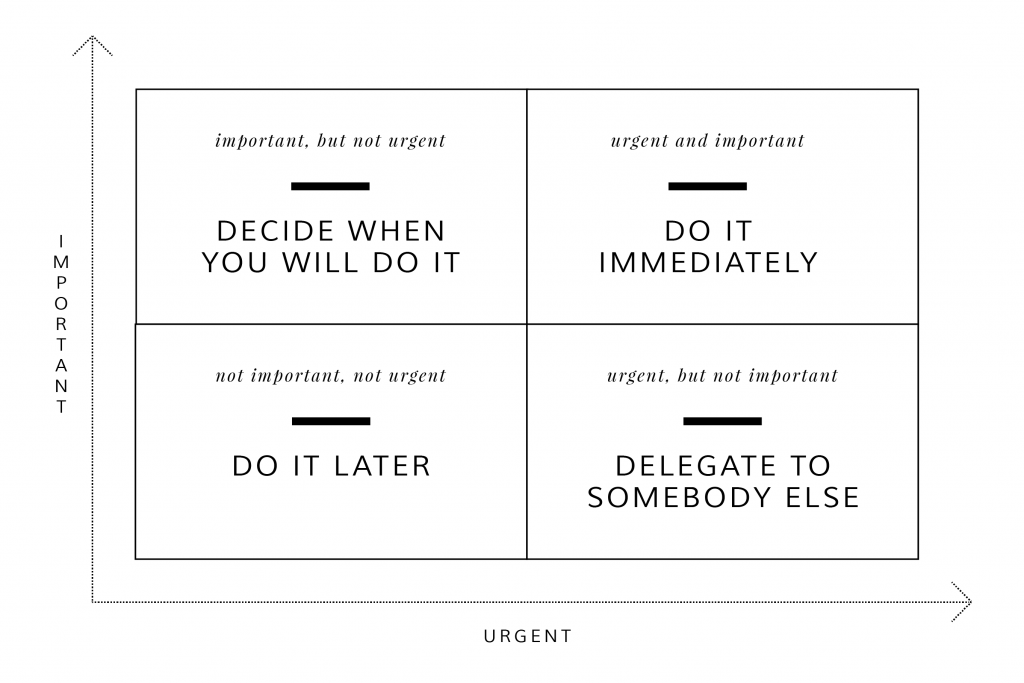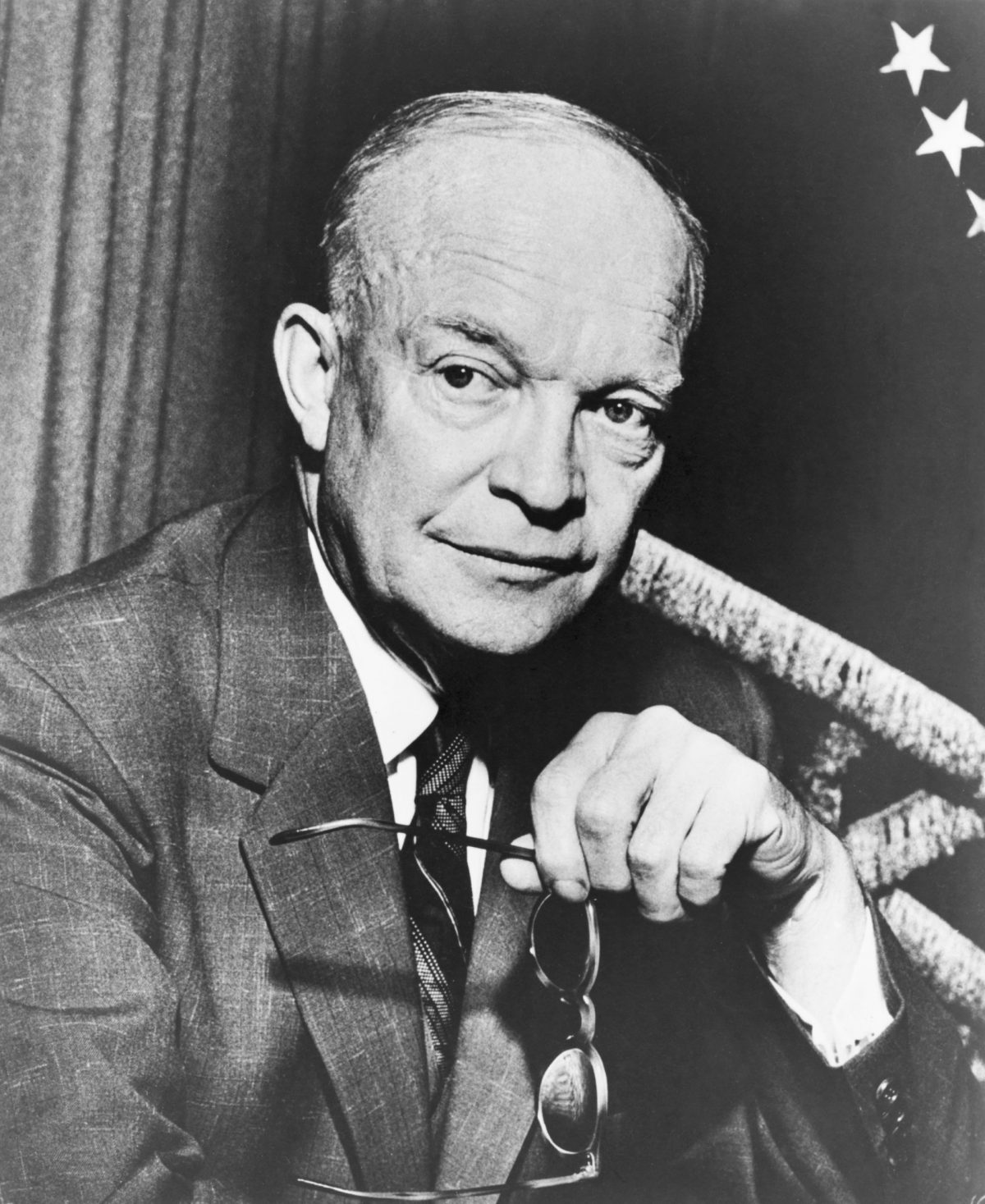As the 34th President of the United States (1953 – 1961), Dwight D. Eisenhower was unbelievably productive. During his tenure in office he launched programs that directly led to:
- the development of the Interstate Highway System,
- the exploration of space (NASA), the signing into law the first major piece of civil rights legislation since the end of the Civil War,
- the ending the Korean War,
- the welcoming of Alaska and Hawaii into the union,
- the launch of the internet (DARPA), and
- the peaceful use of alternative energy sources (Atomic Energy Act).
He had an incredible ability to sustain his productivity not just for weeks or months, but for decades. It is because of this ability to ‘get things done’ that his methods for time management, task management, and productivity have been studied, and continue to be applied, by many people.
This super-human productivity was in large part brought about through his ability to prioritize and he achieved this through a matrix he created which is now dubbed the “Eisenhower Box”.
What Is The Eisenhower Box?
The Eisenhower Box is an easy and extremely effective way to prioritize and manage tasks and your time.
This visual method of time management splits tasks into four quadrants to help prioritize and complete them.
Boxes are labelled one to four, each with a specific action point: do, decide, delegate or do later.
- Do: Urgent and important – tasks to complete immediately.
- Decide: Important but not urgent – tasks that you should prioritize and schedule to prevent a last-minute rush.
- Delegate: Urgent but not important – urgent but menial tasks, like meetings that get in the way of the important ones.
- Do it later: Not urgent and not important – tasks that only serve to waste time and that you can remove from your to-do list or do them later.
The fantastic thing about the Eisenhower Box is that it can be used for a broad array of productivity plans (“How should I spend my time each week?”) and for smaller, daily plans (“How should I spend my time today?”).

Urgent vs. Important Tasks
Urgent tasks are time-sensitive responsibilities. They are the jobs that require swift attention and include things like phone calls, emails, meetings and immediate crises.
Important issues, on the other hand, are of greatest importance to the growth of your endeavour. They contribute to the big picture, however these are often pushed aside when urgent tasks force their way in. As Brett McKay says: “Important tasks are things that contribute to our long-term mission, values, and goals.”
“Who can define for us with accuracy the difference between the long and short term! Especially whenever our affairs seem to be in crisis, we are almost compelled to give our first attention to the urgent present rather than to the important future.”
Dwight D. Eisenhower, 1961 address to the Century Association
As you can see, our important tasks often take a backseat to the high cadence urgent tasks that get strewn across our desks on a daily basis. This leads to feeling constantly ‘busy’ without truly accomplishing anything towards our greater vision.
As Tim Ferriss says, “Being busy is a form of laziness — lazy thinking and indiscriminate action.”
Distinguishing between “urgent” and “important” using the Eisenhower Box helps to visually compartmentalize your thoughts and thus make better decisions.
In this way, the Eisenhower Box provides guilt free permission to focus your attention on tasks that truly matter (the first two quadrants) while allowing you to eliminate anything that doesn’t positively contribute to your higher purpose.
This is useful to me as it makes me truly question whether a task is important…
- Does it contribute toward my ultimate goal?
- What are my core values that I am driving toward?
Conclusion
Eisenhower’s Urgent/Important Principle helps you quickly identify the activities that you should focus on, as well as the ones you should abruptly ignore.
“I have two kinds of problems, the urgent and the important. The urgent are not important, and the important are never urgent.”
Dwight D. Eisenhower
When you use this tool to prioritize your time, you can increase productivity on tasks that contribute towards your important, longer-term goals without wasting time.

One reply on “The Eisenhower Box For Increased Productivity”
[…] If things get out of hand, there is no debate about what to revert to. You have already decided what is urgent and what is important. […]